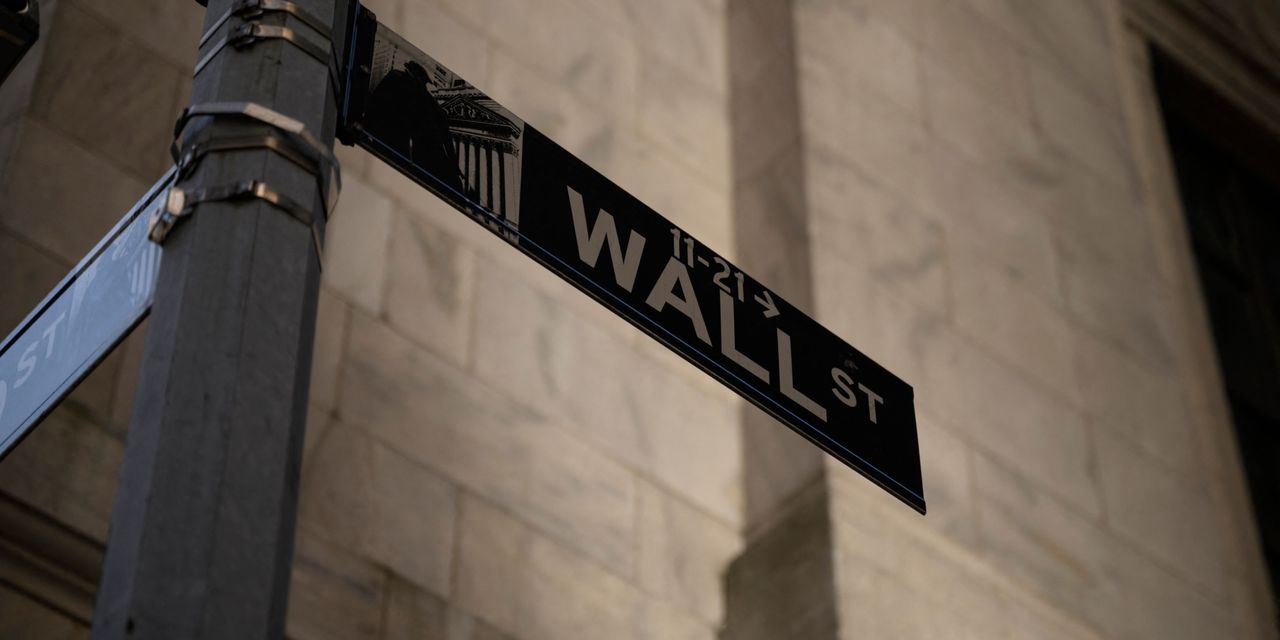Recession warning lights are flashing in financial and commodity markets, but U.S. stocks seem to be at least holding their own, if not finding their footing. What gives?
Treasury yields have pushed back up this week but the 10-year maturity
TMUBMUSD10Y,
remains well off its 2022 peak near 3.5% and the 2-year yield
TMUBMUSD02Y,
has moved back above the 10-year, again inverting a part of the curve seen as a reliable recession signal if sustained, observed technical analyst Andrew Adams in a Wednesday note for Saut Strategy.
Also, the five-year/five-year break-even rate — a markets-based measure of where investors expect future inflation expectations to be — pulled back below the Fed’s long-term inflation target at 2% and commodities, including growth-sensitive copper, have tumbled across the board in recent days.
“When we add it all up, the markets appear to be telling us that we should prepare, if not for a recession, at least for a lower growth environment,” Adams wrote.
“However, that may not necessarily be crippling for stocks if it also means the highly-aggressive path of Fed rate increases that the market has come to expect will now be more muted,” he explained.
Stocks have been hammered in 2022, with the S&P 500
SPX,
sliding into a bear market as it dropped more than 20% from its Jan. 3 record close. The large-cap benchmark is down more than 18% year to date, while the Dow Jones Industrial Average
DJIA,
has shed nearly 14% and the Nasdaq Composite
COMP,
has declined over 26%.
But stock prices have found some stability this week, with the S&P 500 rising 1.1% on Thursday and on track for a fourth straight gain. If the gain holds up through the close, it would mark the index’s longest winning streak since late March, according to Dow Jones Market Data.
Adams noted that, so far this year, the primary worry for market participants has been high inflation and rising interest rates.
“If those two pressures start to ease, it could be a net positive for stocks even if GDP (gross domestic product) is softer and companies aren’t seeing explosive earnings growth. Remember, the market is constantly pricing in its future expectations, so all that needs to happen to see higher equity prices is for things to not be ‘as bad’ relative to current expectations.”
That doesn’t mean the selloff is over, but it could offer fodder for a near-term bounce.
“I do not believe we have enough evidence to proceed as if we’ve hit a major bottom that will never again be threatened, but the market is behaving in a way that still supports a forthcoming rally despite the recent false turns,” Adams said. “At the very least, we need to remain vigilant for signs that buyers are seizing control.”
Stocks on Wednesday largely shrugged off the minutes of the Fed’s June meeting, which showed officials affirming a resolute stance to wring out inflation. Analysts argued that while the tone was hawkish, signaling policy makers are intent to continue delivering outsize interest rate hikes, investors had expected the tough talk given that policy makers had delivered a 75 basis point rate rise at the June meeting — the largest since 1994.
Since that meeting, the focus has turned to signs of slowing economic growth. The Atlanta Fed’s closely followed GDP Nowcast model is currently forecasting a 2.1% contraction in second-quarter GDP. If that proves correct, it would mark a second consecutive quarter of contracting GDP.
Though a second consecutive quarter of negative growth of the U.S. economy would meet a generally-used definition of recession, the National Bureau of Economic Research (NBER), the official arbiter of U.S. business cycles, uses different criteria. The NBER’s definition of a recession is that “it is a significant decline in economic activity that is spread across the economy and that lasts more than a few months”.
Read: The US won’t officially be in recession if GDP shrinks again
The U.S. labor market, meanwhile, remains historically strong — part of the reason economists doubt the NBER would be in a rush to declare a recession even if GDP does shrink for two consecutive quarters. But investors will be paying close attention to Friday’s June jobs report for any signs of cooling in the labor market, analysts said.
Economic Preview: Hiring in U.S. likely fell to 18-month low in June —250,000 new jobs forecast
